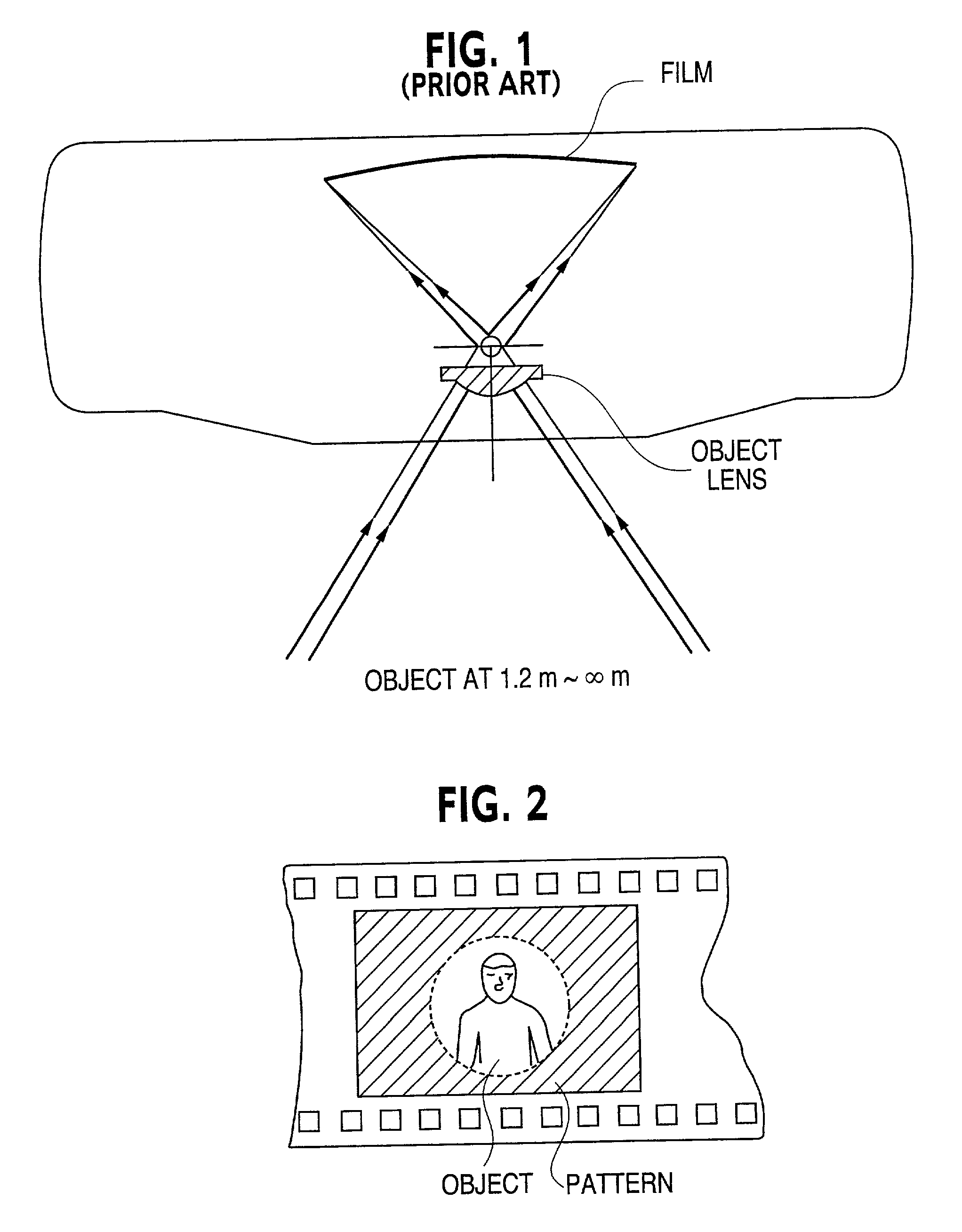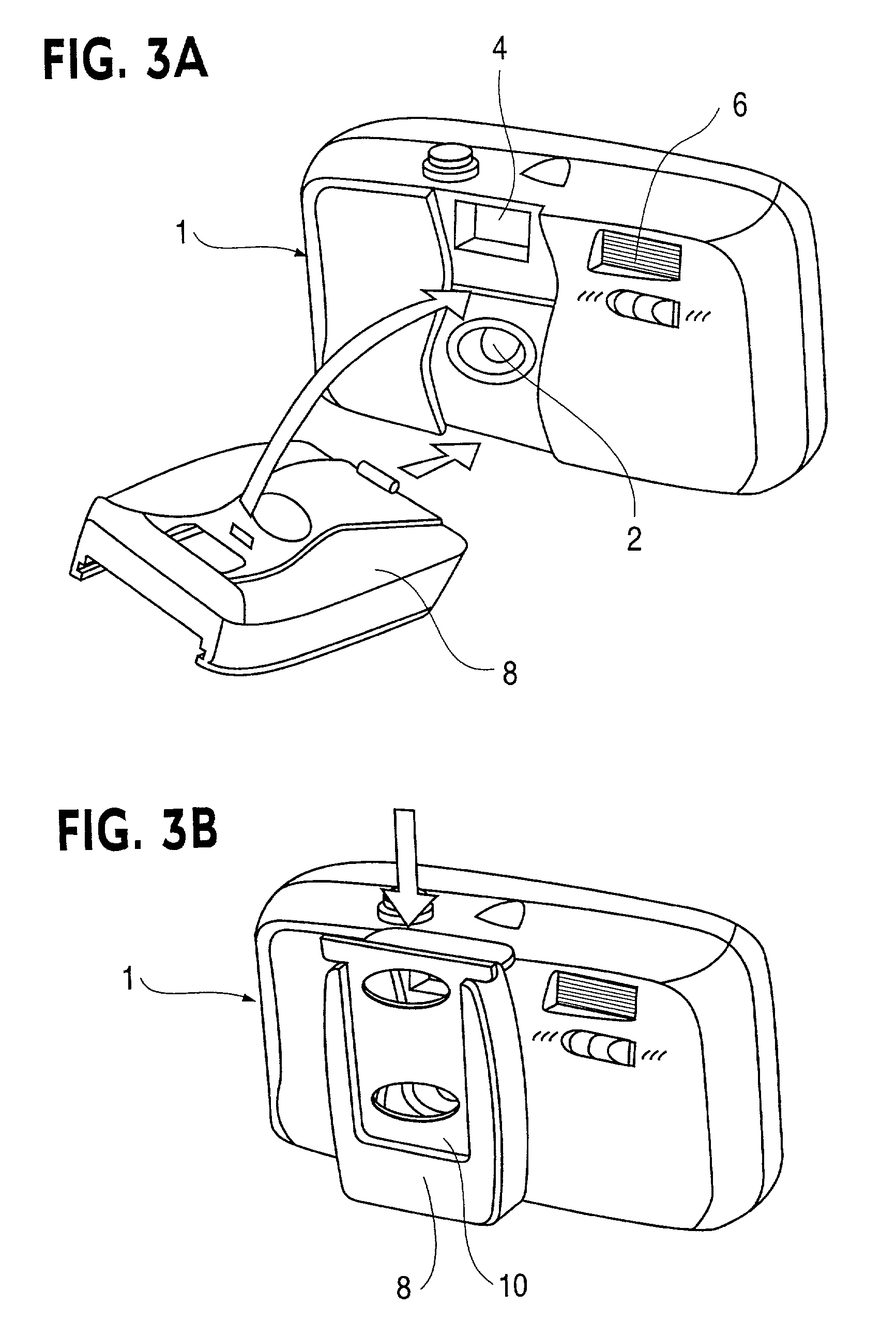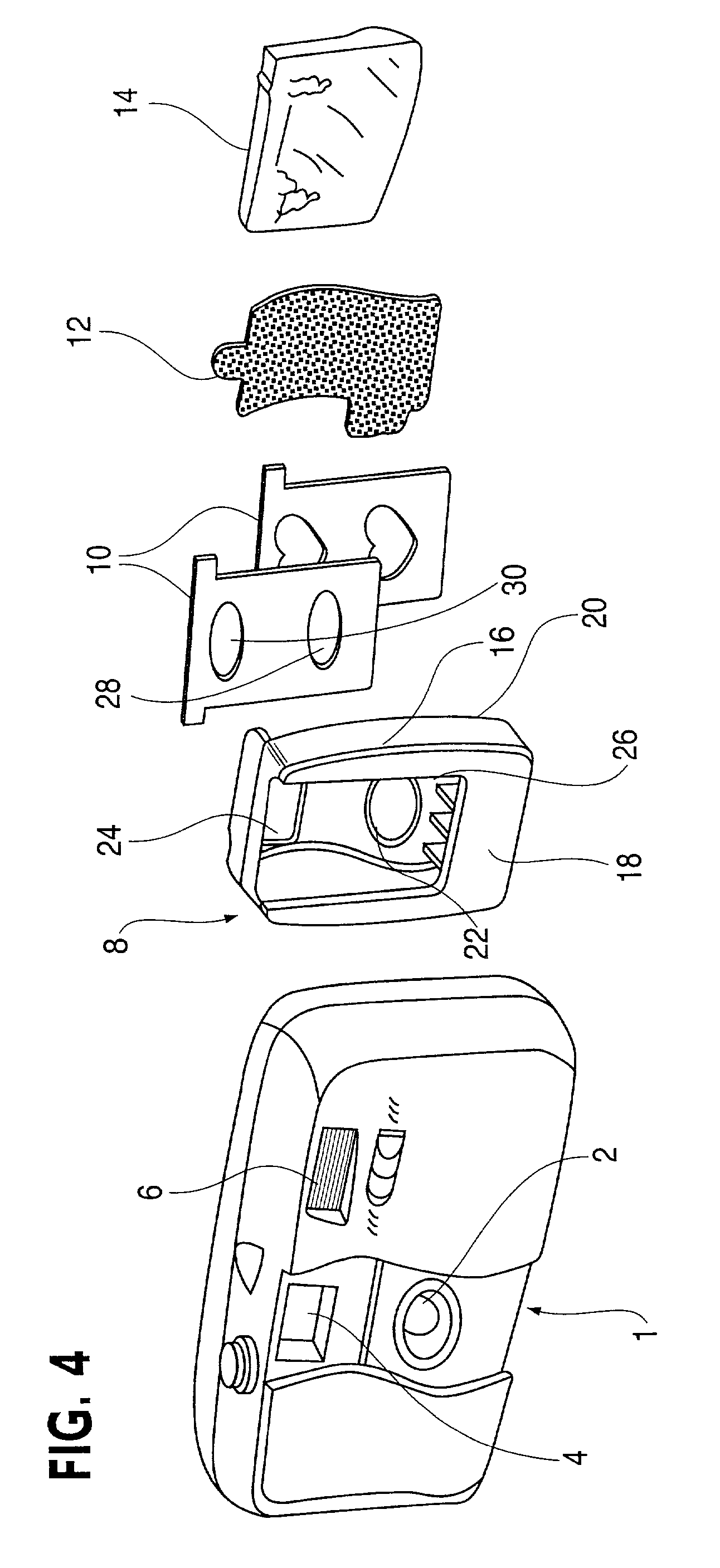Camera
a technology for cameras and lenses, applied in the field of cameras, can solve the problems of inconvenient replacement of filters, inconvenient casual picture taking, and high implementation costs, and achieve the effects of convenient replacement of filters, and convenient replacement of filters
- Summary
- Abstract
- Description
- Claims
- Application Information
AI Technical Summary
Benefits of technology
Problems solved by technology
Method used
Image
Examples
Embodiment Construction
Internal Image Bearing Means
[0111] In a first embodiment, a camera is provided with an external plate for clarifying an image to be superimposed on a photograph. The camera may have an internal image bearing means. Referring to the drawings, camera 1 as shown in FIGS. 3A and 3B is provided with a lens 2 and a viewfinder 4. Light from an object to be photographed travels through the lens 2 and is recorded on a film. The camera 1 also has a flashlight 6.
[0112] A holder 8 is provided for attachment to the front of the camera 1. Referring to FIG. 4, the holder 8 has side walls 16, a back wall 20 and a front wall 18. The holder 8 snap fits onto the front of the camera 1 for easy attachment and removal. The back wall 20 of the holder 8 has a first aperture 22 corresponding to the position of the lens 2. The back wall 20 of the holder 8 has a second aperture 24 corresponding to the position of the viewfinder 4. The holder 8 is formed of a white plastics material.
[0113] The front wall 18 of...
PUM
 Login to View More
Login to View More Abstract
Description
Claims
Application Information
 Login to View More
Login to View More - R&D
- Intellectual Property
- Life Sciences
- Materials
- Tech Scout
- Unparalleled Data Quality
- Higher Quality Content
- 60% Fewer Hallucinations
Browse by: Latest US Patents, China's latest patents, Technical Efficacy Thesaurus, Application Domain, Technology Topic, Popular Technical Reports.
© 2025 PatSnap. All rights reserved.Legal|Privacy policy|Modern Slavery Act Transparency Statement|Sitemap|About US| Contact US: help@patsnap.com



